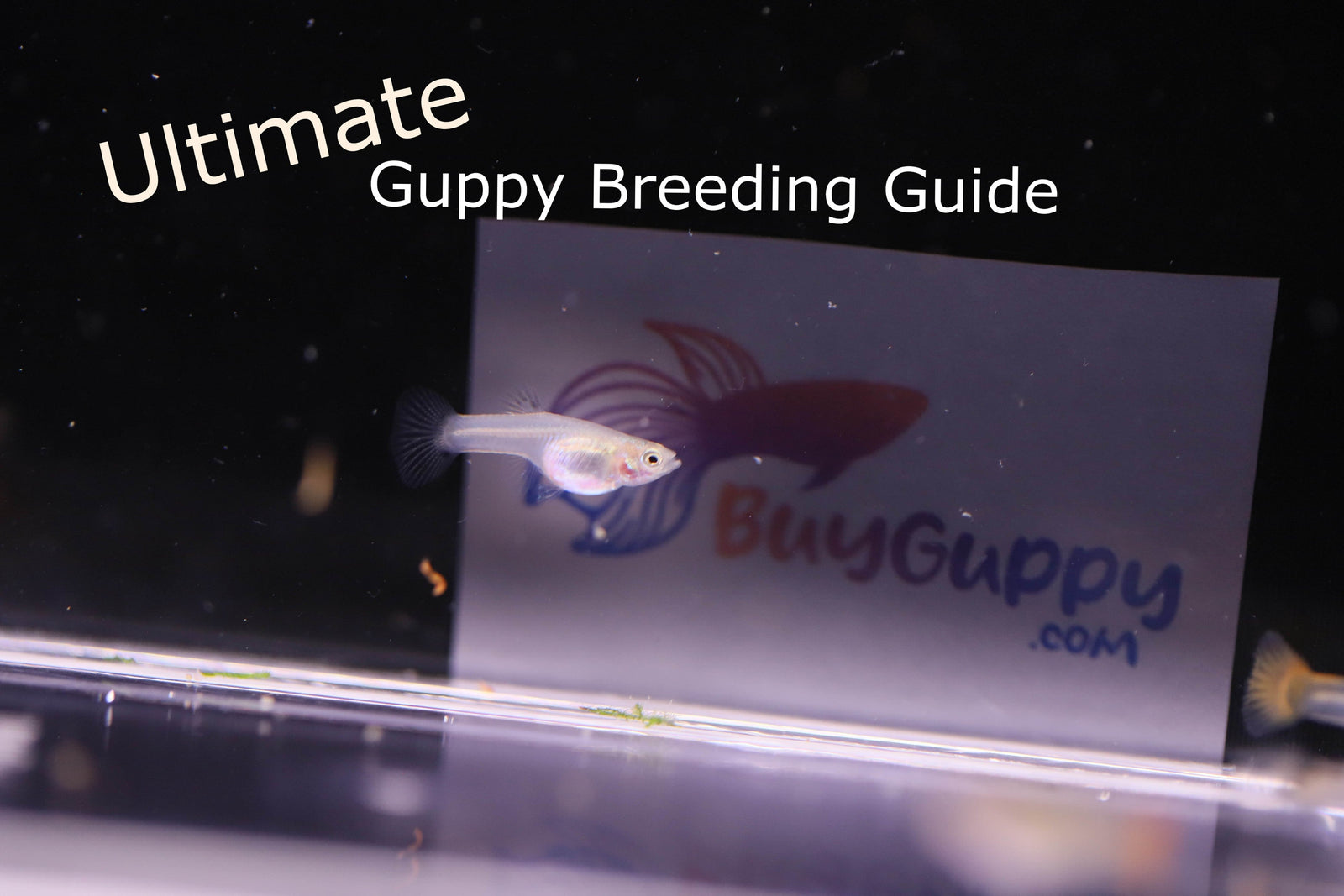Preparing For Breeding
Breeding guppies is the most amazing thing in aquarium fish keep for a lot of people, including myself! The joy and concept of raising up baby frys to adult makes me very proud. It's a lot of work combined to raise them up to healthy and well-living adult fish. In this guide, I'll talk in detail about how to breed guppy fish and care for the frys, from a professional breeder perspective.
Before getting to any of the next steps, it’s essential to choose which variety of guppy fish you would like to breed. For instance, if you want to breed some elephant ear guppies, then you will need the parent fish to be Elephant ear guppies, the babies will only look like their parent if both parents share the same gene. For instance, a red dragon male mating with an assorted fancy female will NOT have babies looking like the male. Cross breed different variation of guppies will create something called “Fancy guppy” or “Mutt guppy”

Depending on the variation of guppies you want to breed, the selection of parent fish will differ correspondingly. It’s important to note that guppies may not always reproduce identical offspring due to the variation of genes. Usually when breeding guppies, if the female has 30 fry, only 8-15 will fully grown to the parent’s body coloration without losing or missing color. This can be slightly improved by other factors, e.g. Diverse diet, which I will be covering in later of this guide. Having this expectation in mind if very important before the breeding process
Setting Up a Breeding Tank
When you are selective breeding, it’s ideal to use a separate tank with only the breeder fish to ensure higher success and the purity of the gene. For this, a tank between 5-10 gallons with a sponge filter installed inside is the best.
To simulate a natural environment, breeders (also myself) tend to fill up the tank with a lot of plants. Plants are very important to the overall health of the fish; you can check out our detailed guide about plants.
Breeding tanks usually have no substrates to make maintenance easier. Guppy grass and Java moss are usually the best plants to go for, they suck up a lot of bad chemicals and provide a better environment for them. Plants also act as hiding space for the new born baby guppies, since the guppy mother can’t differentiate their children and food. A lot of them get eaten straight away. It’s important to create some hiding space so guppy fry can hide from their parents.
The Breeding Process
When adding the parent fish, following a ratio of 2-3 females to 1 male is recommended. This helps to increase the breeding rates while minimizing the chances of the female guppies from being attacked.
For anyone wondering how to identify between males and females, primarily female guppies are much larger than males. Male guppies tend to be more vibrant and colorful along with longer fins. When observed, female guppies have rounder bellies which are larger when compared to the ones of males.
Observing The Mating Behavior
Once the parent fish have been introduced to the tank, signs of mating should be visible after a couple of days. This can be witnessed when the male fish starts chasing the females. After observing for a week or two and if there are no signs of mating, it’s recommended to replace the male guppy fish.
Taking care of the fry
Once the guppy fry is born, it’s recommended to separate them from the parent fish right away to a smaller tank or container just for them. This will save you most of the fry from being eaten from their parent in the next few days. The tank setup for the babies can be simple- just a small .5 gallon with an air stone. Smaller tanks are better since it allows baby guppies to use less energy hunting for food source, which can be turned into growth of their size.
It’ll generally take up to 2 months for them to develop color and size. During the stage where they begin displaying their visual appearance and variations.
Guppy fry are some hardy fish, even tougher than their parents since new fish adjust to the environment better. You could simply feed the fry with the parent’s food crashed into powder, and they can healthily grow into adult fish. But for the best development of its coloration and pattern, and growing speed. You should feed them a variety of different diets, such as baby brine shrimp (Live is better), flakes (crashed into powder), guppy food (powder form).
Guppy fry’s digesting system completes each circle in proximately 30 minutes to an hour. Which means you can feed them every 1-2 hours. For the fastest growing speed you can feed your guppies up to 8 times a day! But make sure to feed them small amounts of food so that they can finish in 30 seconds. Food waste can generate ammonia which is toxic to the tank.
Changing 20-30% water every day can significantly increase the growth speed of the fish, since it simulates more of a natural environment which stimulate a chemical within the fish telling them there are enough room here to grow better. By making frequent water changes and providing them with a diverse diet, guppy fry’s pattern and coloration are generally more vibrate than other guppies.

Final Thoughts
Although breeding guppies is generally an effortless task, breeding a specific variation of these fish requires some time and expertise. During certain instances, breeders may receive their expected variety on their first attempt while at certain times it could take multiple tries. The guppy selections provided in our store are all breed-ready, as we have stabled their genes for a few generations. Most of the offsprings will inherit the parent's pattern/coloration which makes breeding a lot easier! You can find our beautiful guppies for sale here
Nevertheless, remember to select matching or appropriate parent fish and follow other practices such as preparing a separate breeding tank, and most importantly, be sure to expect some trial and error!

